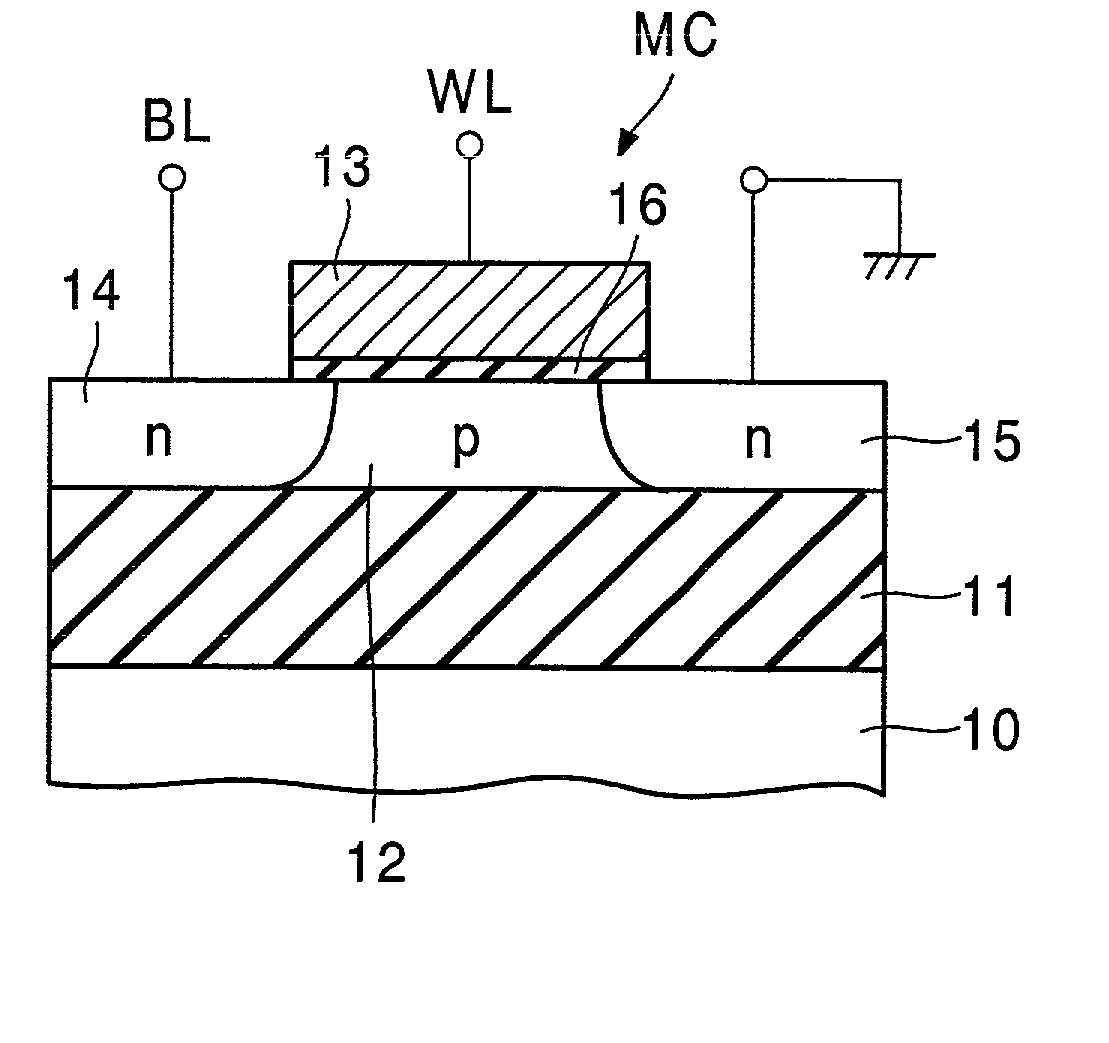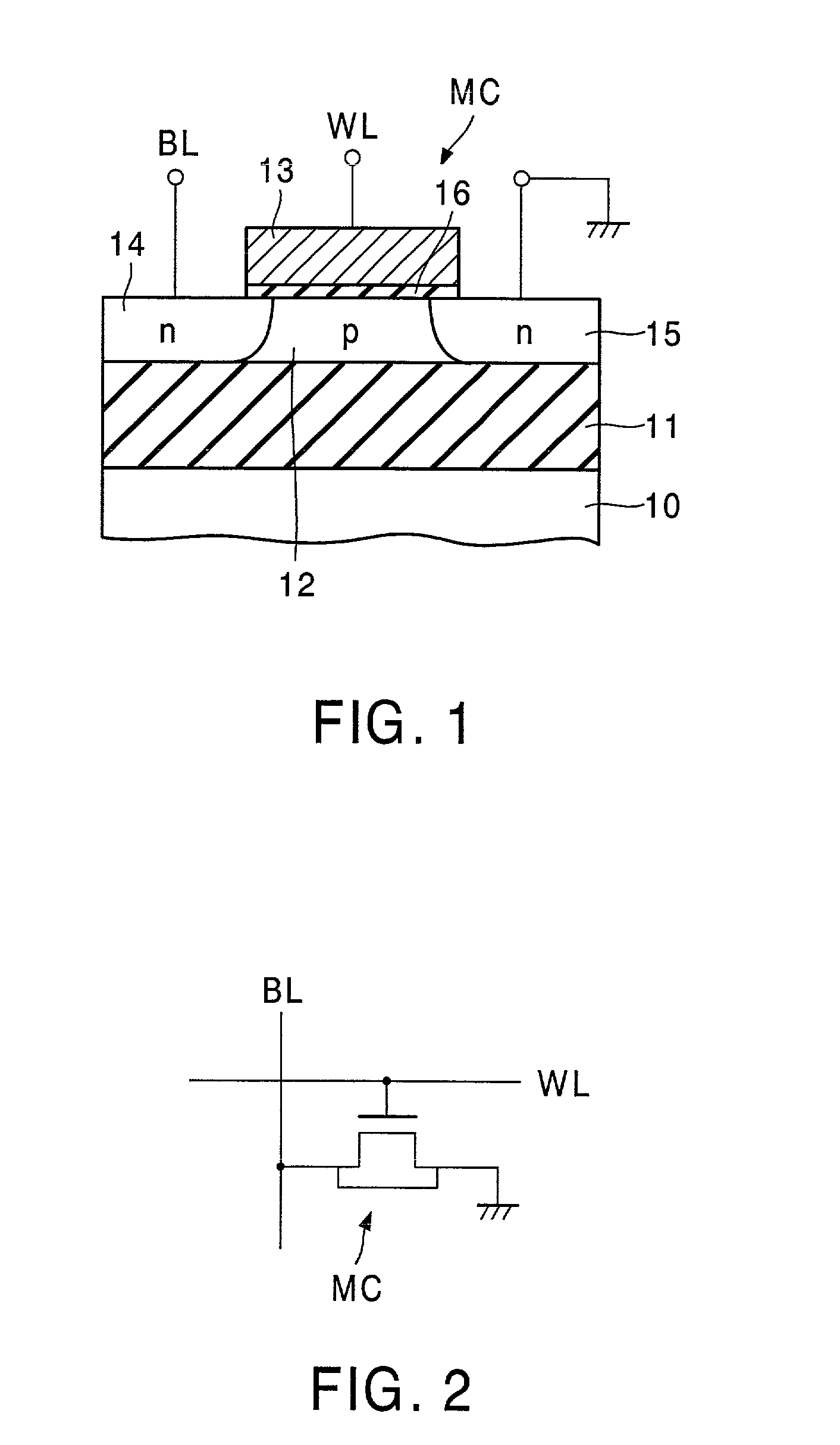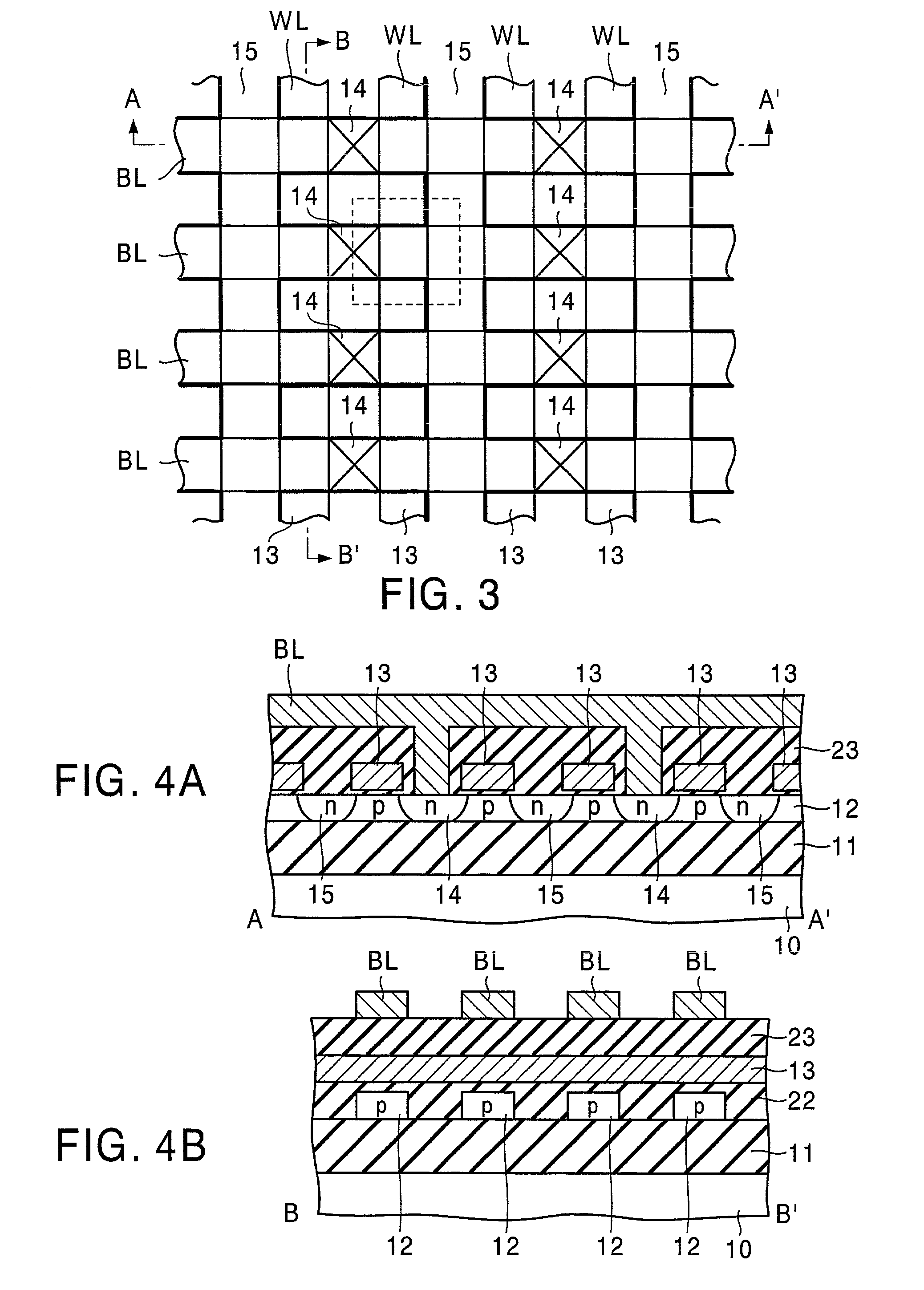Semiconductor memory device
- Summary
- Abstract
- Description
- Claims
- Application Information
AI Technical Summary
Benefits of technology
Problems solved by technology
Method used
Image
Examples
first embodiment
[0136] FIG. 19A shows the structure of a memory cell MC according to a first embodiment of the present invention corresponding to FIG. 1. The basic structure is the same as in FIG. 1, and FIG. 19A is different from FIG. 1 in that a second gate 20 which capacitively couples with the silicon layer 12 while facing it with a gate insulating film 19 therebetween is buried in the oxide film 11 separately from the first gate 13 to control the channel, and in that such a high concentration p.sup.+-type layer 21 that the channel inversion layer is not formed is formed on a surface on the second gate 20 side of the silicon layer 12. That is, the p.sup.+-type layer 21 is formed in the silicon layer 12, and conductive type of the p.sup.+-type layer 21 is the same as that of the silicon layer 12 and impurity concentration of the p.sup.+-type layer 21 is higher than that of the silicon layer 12. Since the p.sup.+-type layer 21 exits, even when a positive potential is applied to the first gate 13 ...
second embodiment
[0161] FIG. 20 shows the structure of a memory cell MC according to a second embodiment. Differently from the embodiment in FIG. 19A, in this embodiment, the second gate 20 is disposed as a common gate (back plate) so as to cover the entire cell array region without being patterned as lines. Namely, the second gate 20 is provided for all the MIS transistors in the memory cell array. According to such a structure, the alignment of the second gate 20 with the first gate 13 becomes unnecessary, and the manufacturing process is simplified.
[0162] In such a structure, the second gate 20 is fixed, for example, at a potential equal to or lower than a source potential, and the same operation as explained in the preceding basic memory cell is performed. Also in this case, by increasing the amplitude of the first gate 13 (word line WL), a signal difference between the "0" and "1" data can be increased. Namely, when the second gate 20 is capacitively coupled to the channel body at a fixed poten...
third embodiment
[0163] FIG. 21 shows the layout of a memory cell array according to a third embodiment, and FIG. 22 shows its section taken along the line A-A'. The SOI substrate is used for making a transistor with a floating channel body in the embodiments heretofore, while, in this embodiment, a memory cell is composed of a vertical MIS transistor with a floating channel body by using a so-called SGT (Surrounding GATE Transistor) structure.
[0164] In the silicon substrate 10, trenches running lengthwise and crosswise are formed by RIE, and P-type pillar silicon portions 30 are arranged therein. The fist gate 13 and the second gate 20 are formed to face each other on both side faces of each of the pillar silicon portions 30. The first gates 13 and the second gates 20 are buried alternately between the pillar silicon portions 30 in the section in FIG. 22. The first gates 13 are formed isolatedly as independent gate electrodes relative to the adjacent pillar silicon portions 30 between the adjacent ...
PUM
 Login to View More
Login to View More Abstract
Description
Claims
Application Information
 Login to View More
Login to View More - R&D
- Intellectual Property
- Life Sciences
- Materials
- Tech Scout
- Unparalleled Data Quality
- Higher Quality Content
- 60% Fewer Hallucinations
Browse by: Latest US Patents, China's latest patents, Technical Efficacy Thesaurus, Application Domain, Technology Topic, Popular Technical Reports.
© 2025 PatSnap. All rights reserved.Legal|Privacy policy|Modern Slavery Act Transparency Statement|Sitemap|About US| Contact US: help@patsnap.com



